Lisa Niver's Blog: We Said Go Travel, page 447
December 1, 2013
England: Under Big Norfolk Skies
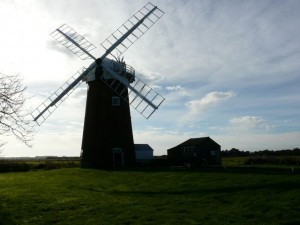 The water is steaming, a white vapour sponging the darkening sky. I watch the heavens smudge grey and pink before deepening to navy-blue. High above us midges dance in dizzying circles. I plunge under the warm, bubbling water and when I surface again, one single star has emerged, alone in the sky. “Vega, Arabic for swooping eagle,” says Tom my husband. “It’s one of the brightest stars in the northern sky.”
The water is steaming, a white vapour sponging the darkening sky. I watch the heavens smudge grey and pink before deepening to navy-blue. High above us midges dance in dizzying circles. I plunge under the warm, bubbling water and when I surface again, one single star has emerged, alone in the sky. “Vega, Arabic for swooping eagle,” says Tom my husband. “It’s one of the brightest stars in the northern sky.”
We’re in the Norfolk Broads, the part of England that juts out like a bottom. We’re travelled less than 200 miles for an autumn break. It feels as hot and exotic as the Okavango Delta in Botswana or the Sundarbans of India, but actually we’re sitting outside an English cabin in a hot tub. Vega blinks at me and the longer I gaze, the more certain I am the star is moving, swooping towards me like a silver eagle. “Just think,” says Tom, my husband. “It takes twenty-six years for the light to reach us here on earth. Vega could have died for all we know – since we’re looking at the past.”
It’s a dazzling thought.
And one by one other stars appear. The sky is clear, the night still, the air almost balmy. It’s hard to imagine that St Jude, a violent storm, not a gentle saint, had passed over here just a short time ago. On Monday Jude, the patron saint of despair and hopelessness, had whipped the oaks behind our cabin in fury. Branches and twigs crashed onto the roof, the birch trees lining the wetlands in front of the window bent over at an alarming angle. We gazed out from the safety of four walls, feeling stranded, like a ship at sea. Then the storm was gone as suddenly as it arrived.
With the return of calm, we’d taken bikes and cycled the Norfolk lanes. The sun shone benignly, the trees motionless: it was as if the storm had never happened – except the roads were swollen with mud and stones and the debris from the winds. Occasionally trees protruded onto the lanes, already cleared, cut back from where they’d crashed onto the road. But grey turned to gold. Autumn shone. Now and again, the roadside held little offerings of garden fruits and vegetables: marrows and pumpkins, apples and sweet chestnuts. I filled the basket of my bicycle with plump cookers and Coxes. We pedaled on past wooden barns, thatched cottages and village ponds, scattering grouse and pheasant and duck. Overhead wintering geese shot an arrow across the big, big skies of Norfolk.
By Wednesday, the sky was deep blue, the sun warm on our skin. We hired a canoe and paddled up the River Waveney, listening to the whisper of the reeds. We tied up our canoes and ate our sandwiches, lifting our faces to the sun. Heading back downstream, we held our paddles across our knees and let the current take us gently home. Now in the hot tub, the sky’s filling, filling up with stars. A satellite shoots across our vision. I am suddenly aware of my fragility in the great cosmos: an insignificant speck out in space, yet I sense the universe belongs to me.
About the Author: Helen Moat spent her childhood squished between siblings in her Dad’s Morris Minor, travelling the length and breadth of Ireland. She’s still wandering. Helen blogs at: http://moathouse-moathouseblogspotcom.blogspot.co.uk/
The post England: Under Big Norfolk Skies appeared first on We Said Go Travel.
Guatemala: Waters With a Taste of Mountain
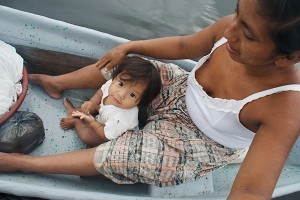 “First the earth was created, the mountains and the valleys. The waterways were divided, their branches coursing among the mountains. Thus the waters were divided, revealing the great mountains. For thus was the creation of the earth, created then by Heart of Sky and Heart of Earth, as they are called. They were the first to conceive it.” -Popol Vuh
“First the earth was created, the mountains and the valleys. The waterways were divided, their branches coursing among the mountains. Thus the waters were divided, revealing the great mountains. For thus was the creation of the earth, created then by Heart of Sky and Heart of Earth, as they are called. They were the first to conceive it.” -Popol Vuh
Very gently, like a thief entering a sleeping house, the fairy Morgana slides through the gates of the mountain: the mouth of Rio Dulce. It is the entrance to another world. Rocky shores (temples without roofs) overgrown with dark trees. Dark trees (sorcerers with sleeping birds and snakes in the hair) stretching thin fingers down, down to the green waters of the river. Green waters of the river (messenger of the tallest mountain and forgotten places) carrying aromas and the petrified reflections of ancient gods.
Nothing happens. Like in a vacuum. Like in a dream. Rocky shores, dark trees, green waters of the river-serpent. Only forest butterflies, men of maize in cayucos carved from trees fishing with nets made of Mayan secrets, and our alien boat sailing through the mountains perturb the slumber of this enchanted world.
Nothing happens for three days and three nights. We remain anchored near Cayo Quemado, a few mile before the town of Rio Dulce, unable to continue, slowly letting Guatemala soak in our bones through our skins, through our eyes, ears, and mouths.
Our mornings are populated by crystal drizzle, the smell of small fires, and the cry of a black forest bird.
A silent cayuco sneaks next to our boat. A mother with three children older than time are selling tamales. She made them this morning over the fire, with her hands and her magic. She put a chicken bone for a skeleton in the middle of corn-rolls and wrapped them, like a newborn baby, in palm leafs. Over the fire, under her spell. They taste of palm leafs, smoke and flesh.
Our afternoons move slowly in the heat of the summer and even stop for an hour or go backwards. Time here is not the same.
On the second day we meet the river people. Half human half fish they live in the river from the waist down and in the forest from the waist up. They have small wooden houses built on the river banks. Their cayucos glide like snakes on the surface of the waters. They have no other roads but the rivers. Their enemies are the invisible river crabs.
Our evenings are purple with white dots. Purple like the mountain. The white dots are the lilies near the shores and the egrets returning to sleep in the trees.
Our nights are filled with the distant songs of frogs and cicadas, and the melancholic cries of the river manatees.
About the Author: Mira Nencheva is a photographer, writer, and a nomad. Her house is a 38-foot sailboat called Fata Morgana. Mira, her husband, and two children travel around the glove exploring natural and cultural sites of interest, living off grid, volunteering, and making art for social change.
The post Guatemala: Waters With a Taste of Mountain appeared first on We Said Go Travel.
New Zealand: Family Memories Around Lake Waikaremoana
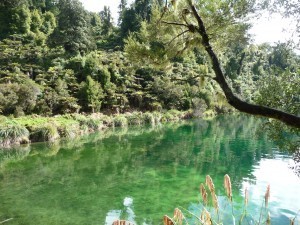 Two bald headed men stood with their sisters on Bald Knob gazing out over the green New Zealand bush to the clear blue water of Lake Waikaremoana. Our family of four, all in our fifties, were holidaying together for the first time in 40 years while undertaking the four day three night Great Walk around what the local Tuhoe people call the bathing waters of their ancestors.
Two bald headed men stood with their sisters on Bald Knob gazing out over the green New Zealand bush to the clear blue water of Lake Waikaremoana. Our family of four, all in our fifties, were holidaying together for the first time in 40 years while undertaking the four day three night Great Walk around what the local Tuhoe people call the bathing waters of their ancestors.
Muttering and cursing as we slogged over beech tree roots and up rock faces ascending the Panekire Bluff, the views from various vantage points made it all seem worthwhile. We diverted each other by laughing over childhood memories as we hauled ourselves and our packs to the first night’s hut. Nothing has ever tasted as good as that meal, cooked on a small portable gas stove and eaten by candlelight as dusk fell, warmed by a wood fire. Lying in the pitch black in our bunks we heard the morepork’s distinctive cry before falling asleep.
The following day, despite a few aches, we set off jauntily to descend the other side of the Bluff. By now we were settled into the routine of the tramp. After a hearty breakfast and with the anticipation of a new day and the thrill of the unknown before us we would leave the hut. Morning teas and lunches were enjoyed by the side of the track, sitting on the roots of a beech tree or a cushion of dead fern fronds. We boiled the billy for tea and ate our bacon and egg pie or sandwiches while reliving old, and creating new, memories.
The descent was severe with awkward wooden steps to negotiate and an uneven, steep track in places. The foliage had changed and the scrubby trees on the other side of the Bluff were complemented by more traditional native bush where tuis and bellbirds sang. There were brief patches of walking across flat, grassed track and swing bridges to cross. We loved the variety of the track as well as the scenery.
Always there was the beauty of the lake and we saw so few other people that most of the time it was just the four of us in our own green and blue wonderland. Clear and clean the lake’s water was so enticing that on our second morning we began the day with a quick dip, much to the astonishment of a duck family that lived on the lake’s edge.
On the third day the Te Urewera National Park lived up to its misty reputation and it rained. Trudging along in our wet weather gear we sheltered under the porch of a privately owned hut to eat our lunch. The considerate owner had provided shelter, seats, drinking water and information for trampers.
Braving the wetness again we welcomed the shelter of the bush canopy as we completed the 19 kilometres, our longest day, to Whaiharuru Hut. The rain had stopped by the time we reached it and that night, our last, we sat outside, despite the sandflies buzzing around, looking out at the lake and thinking how lucky we were to be there.
On our final day it was with a sense of accomplishment, but degree of sadness, that we laced our boots for the three hour walk to Hourphine Landing where we were collected by boat and taken across the lake to our car. As the boat whizzed along we sat tired but contented. It had been a great walk, with exquisite scenery and the best of company all helping to create wonderful memories.
About the Author: Clare Gleeson is a New Zealand historian, librarian and travel writer who enjoys exploring her own country as well as those further afield. She has a travel blog at thewanderinghistorian.com
The post New Zealand: Family Memories Around Lake Waikaremoana appeared first on We Said Go Travel.
November 30, 2013
Gratitude in Stone: The Pantheon, Paris
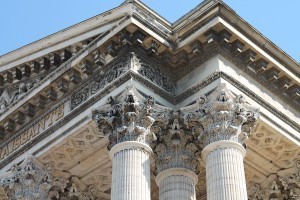 This Panthéon is gratitude made stone.
This Panthéon is gratitude made stone.
It started life as a church, built to honour St. Genevieve, the patron saint of Paris, in thanksgiving for her intercession during Louis XV’s illness. Since then, the Panthéon has been the site of Foucault’s demonstration of his pendulum, which showed the rotation of the earth, and the home of Rodin’s iconic sculpture, The Thinker. During various periods of religious and state upheaval in France, the Panthéon has reverted to its original religious function twice.
Now, most likely for the ages, the Panthéon is a secular mausoleum in which the great figures in French life – the military politics, science, literature, art – are interred by a special act of parliament. Above the entrance, the pale edifice proclaims ‘To the great men, the grateful homeland.’ This is gratitude on a grand scale.
Inside it is cool. The main chamber is lavishly decorated, with murals and balconies, neoclassical pillars and a wide, tiled floor. A replica of Foucault’s pendulum hangs from the ceiling, a polished gold-coloured sphere rotating slowly from a seemingly endless cord. The original is at the Musee des Arts et Metiers north of the Marais.
I look at Voltaire, at Rousseau, at Dumas, who was interred here only in 2002, 132 years after his death, under the presidency of Jacques Chirac. Chirac was also the person who unveiled a new plaque in 2007 to commemorate the Righteous Among the Nations, a status that Yad Vashem in Jerusalem bestows upon people who saved Jews during World War II. There are 2,600 names on the plaque. I think of their bravery, of sacrifice.
Some of the interned, such as Leon Gambetta, are represented among the greatest of their nation only by their heart, with the rest of their body buried elsewhere. Dutch admiral Jan Willem de Winter did the opposite – he let France have his bones but his heart is in the Netherlands. Others, like the Righteous Among the Nations, are honoured with a plaque and buried entirely elsewhere. Most interesting of all is the Marquis de Condorcet, whose remains were lost in the 1800s. A mathematician, abolitionist and passionate advocate for equality (unusually for the time, he was a proponant of rights for women), he died during the French Revolution. For the bicentennial, he was symbolically reinterred in the Panthéon, but his coffin is empty.
There are two women buried in the Panthéon. The first was Sophie Berthelot, the wife of renowned chemist Marcellin Berthelot, buried alongside him at his request. The second is Marie Curie, the first woman interred on her own merits. I think of the inscription outside – To the great men, the grateful homeland – and reflect that Marie Curie was not a man, and that France was not her homeland, and yet her memorial is the only one at which visitors have left flowers, bound together with curling ribbons. Some of the ribbons are red and white, the colours of the flag of her native Poland. Others are inscribed with Polish text. Her work with radium led to her premature death, but her research into radiotherapy has saved lives the world over. I think again of sacrifice, and of what my life as a woman in the twenty-first century owes to Marie Curie. She was the first woman to win a Nobel Prize and remains the only person to win a Nobel Prize in more than one scientific field. I spend a long time looking through the bars at her tomb, at the tributes in Polish colours in this, the most French of resting places.
Built in gratitude to a saint, re-dedicated in gratitude to scientists, artists, statesmen and the quiet heros of the Righteous, I have never been in a building quite like the Pantheon. I leave, blinking in the September sunshine, and look towards the green leaves of the Jardin du Luxembourg. Each evening when the doors close and the last of the tourists amble outside, I wonder if ghosts walk the cool halls in silence.
If they do, I wonder what they talk about.
About the Author: Ellen Brickley is a travel writer who lives in Dublin, Ireland. When she’s not working on a novel, she can be found on a quest to track down the best chai latte in Europe.
The post Gratitude in Stone: The Pantheon, Paris appeared first on We Said Go Travel.
Britain for the Soul
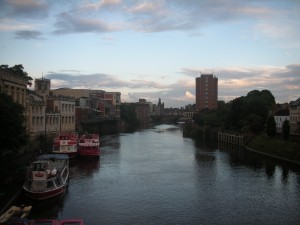 I come from Singapore, which is a tiny country in South-east Asia. On the world map, it is not more than a mere speck. Hence, when I landed in London, I was awe-struck by the sheer largeness of this sprawling city. The skyscrapers and buildings extended on and on, fading away into a hazy brown blur as my eyes squinted into the horizon. It seemed like the city had no end.
I come from Singapore, which is a tiny country in South-east Asia. On the world map, it is not more than a mere speck. Hence, when I landed in London, I was awe-struck by the sheer largeness of this sprawling city. The skyscrapers and buildings extended on and on, fading away into a hazy brown blur as my eyes squinted into the horizon. It seemed like the city had no end.
London was a beautiful city, and I loved that amidst all the development, the city still retained its history and culture. I loved the old cathedrals, the cobblestone streets, the faded walls of brick and brown stone. I loved that the city was a place of such rich history that I could look at the architecture and imagine the lives of people who had lived there hundreds of years ago. It felt to me like simultaneously living between the past and present, and it was a beautiful sensation. I could see the city revealing to me bit by bit, its history in every brick and stone my eyes laid sight upon. It really drew me in.
Then, as a lovely complement, skyscrapers of steel and glass took their spots beside the old buildings. The view, which encompassed the culture of centuries-past and elegant modernity of the city at the same time, was breathtakingly unique. London, to me, was a city like no other.
As I moved on during my journey, I got to explore the countryside too, which was serene and peaceful. Lake District was almost a scene from a dream, with clear rippling waters granted the company of fifty snow-white swans. Lakes wound lazily through quiet settlements, with brightly-coloured little boats gently bobbing on the waters. It was a place where I could forget about the hustle and bustle of city life, and just relax in the moment and tranquil surroundings. It was a good reminder that no matter how busy we get, we should always give ourselves some time off to let loose, enjoy life and smell the roses.
As much as the trip was reflective and enriching, it was also a great deal of fun because of the lovely company I had. It is a great experience to immerse into a new culture full of exciting possibilities with your friends, and to just take in a new place together. Furthermore, Britain was indeed a world away from our world, thirteen hours by flight with an immensely different culture and background.
I guess in the end, besides the place itself, what I’m most grateful for is the opportunity. The opportunity to lose myself in a country with an inspiring history and people; the opportunity to travel out of my comfort zone and even continent; the opportunity to visit places that once upon a time I could only have dreamed of. I will never regret seizing the opportunity to visit Britain and making my hope a reality for myself.
I learned so much, experienced so much, and I fell in love with a place that I would not hesitate visiting again in a heartbeat.
About the Author: I’m 16 years old and I come from Singapore. I like writing poems and other stuff, music, sports etc. I think that writing is something incredible because it has the ability to unite people regardless of their differences. Visit my blog
Thanks for reading!:)
The post Britain for the Soul appeared first on We Said Go Travel.
Nigeria: Obudu Mountain Resort
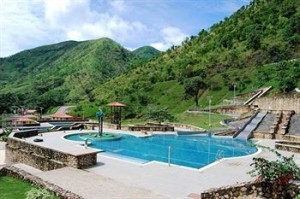 In a typical natural setting, Obudu Mountain Resort is one of the most exciting and interesting places in the world for leisure seekers, holiday makers, tourists and for vacations.It is situated on a plateau at 1576 meters above sea level on the Oshie Ridge of Sankwala Mountains in Cross-River Nigeria close to the borders of Cameroon in the continent of Africa, and can be reached by plane through Lagos from all parts of the world. The temperate climate there offers a total contrast and welcome respite from Africa’s tropical heat. The idyllic tranquility, beautiful scenery, natural vegetation and captivating views make it ideal for the lone adventurer, young couple, holiday group or family on a reunion to have a fun-filled experience.
In a typical natural setting, Obudu Mountain Resort is one of the most exciting and interesting places in the world for leisure seekers, holiday makers, tourists and for vacations.It is situated on a plateau at 1576 meters above sea level on the Oshie Ridge of Sankwala Mountains in Cross-River Nigeria close to the borders of Cameroon in the continent of Africa, and can be reached by plane through Lagos from all parts of the world. The temperate climate there offers a total contrast and welcome respite from Africa’s tropical heat. The idyllic tranquility, beautiful scenery, natural vegetation and captivating views make it ideal for the lone adventurer, young couple, holiday group or family on a reunion to have a fun-filled experience.
Upon arrival to the Resort, a cable car system which is a major talking point for guests in Africa’s longest car system is available to convey visitors and their luggage gently from the tropical climate at the base of the mountain right to the hotel’s reception area on the mountain side of a distance of 4 kilometers. Though short, a pleasurable ride is guaranteed with the cable car system.
Obudu Mountain Resort also provides comfortable accommodation for its guests in form of African round huts and chalets on stilts maximizing proper views, but if you prefer self-contained apartments, it is also available varying in sizes from 2-bedroom Governor’s lodge with its own lounge/dining and kitchen to the 20 mountain villas, each with 3-bedroom, lounge, dining room and balcony. Food and beverages are not left out, it is found at the Terrace Restaurant and Bar located right inside the Resort with a cozy and relaxing atmosphere made complete by the blazing log fire. Both Nigerian native and foreign delicacies are available to suit and satisfy all tastes.
And for those involved in sporting activities, working out and keeping fit, a fully equipped gym, two floodlit tennis court, a squash court and a natural swimming pool are available at the Resort for maximum use. Keen golfers are also allowed to show their prowess on the Resort’s 9-hole golf course.
Viewing the magnificent scenery and spectacular bird life are a must for the visitors to the Resort because they can go through the canopy walkway which is situated in the trees allowing a thrilling close-ups on birds in their natural habitats high above the ground. Tours in the Resort can either be on foot or on a bicycle. So like me, if you desire a memorable leisure experience, get your travel bags and luggage and take a trip to Obudu Mountain Resort Cross-River Nigeria for a true feel of nature’s best combined with class, absolute comfort, satisfaction and world-class services.
About the Author: Fortune Obiagbor is an instructor and a youth conference speaker. He is dedicated to helping youths of this generation use all their gifts, talents and potentials while achieving their goals and fulfilling God’s plans for their lives. His organized youth conferences serves as a source of wisdom and teaches both practical and motivational principles challenging youths in their day to day experiences. Fortune Obiagbor is from Boki in Cross-river Nigeria but and he is the last child of five with siblings, Lawrence, Jerry, Joy, Lydia and his mother.
The post Nigeria: Obudu Mountain Resort appeared first on We Said Go Travel.
Peru: The Man in the Panama Hat
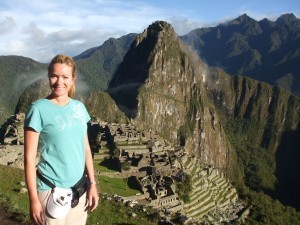 I follow the long line of people towards the start of the trail. Soft sounds of strange languages circle in the breeze. People are hushed and I am grateful. The morning is just beginning to break, hesitant and gentle in its arrival. We are a convoy of quiet expectation, the pace eager but not rushed. Twigs crackle as each foot is placed in front of the other with purpose and curiosity.
I follow the long line of people towards the start of the trail. Soft sounds of strange languages circle in the breeze. People are hushed and I am grateful. The morning is just beginning to break, hesitant and gentle in its arrival. We are a convoy of quiet expectation, the pace eager but not rushed. Twigs crackle as each foot is placed in front of the other with purpose and curiosity.
The man in the Panama hat told me to look out for a small sign off to the left. I am not to miss it. If I do, I will end up at the ruins, with the masses. Although I am eager to explore them, the ruins are not why I have come. I have come for the magic.
Another bend, another rise and there it is, tucked into a bush: La Verja del Sol. The Sun Gate. There is no hesitation. I detour to the left and uphill, around a sharp bend and out of sight.
My pace quickens. I want distance from the bus people and their orderly fleet. The new pathway is tougher, steep and narrow. Brush snaps at my legs and flicks at my cheeks. The thumping of my heart is a reminder of the altitude and I slow down, telling myself to relax and enjoy the sounds of dawn. A bird flutters amongst the leaves, the wind echoes through the hills. Eventually I reach a clearing where the trail is surrounded by a soothing emerald blanket. I stop. The ruins are behind me. Below me. I can feel them. But I don’t turn around.
A sigh escapes my lips and it seems to get stuck in the space around me, as if the all-encompassing silence is blocking its flight. This place doesn’t want to be disturbed. Whispery sheaths of cloud linger around me and there is dew on the grass. The air is clean and thin. Standing alone on this hill, there is no chatter or crunching. But the nothingness has presence. It is heavy with heart.
Searching the pathway ahead I see a faint structure in the distance. The Sun Gate. This inspires me to stick to the plan, to experience the marvel from above. Step by step I keep my eyes focussed on the trail and allow the swirling breeze to carry me forward.
The structure of age-old bricks and mortar form a little arch over the path. It is built like everything else I’ve seen in Peru so far, with humble elegance. Slipping my backpack off, I let it rest against the gate. I am conscious of its red and yellow pattern, and how it interrupts the purity of the space.
I turn around.
The breath catches in my throat as I take my first glimpse of the ancient ruins of Machu Picchu lying below. The grey mottled walls, positioned into patterns and layers, cling to the edges of the mountains. The structures mimic the surrounding landscape of mountains, each with their own camel hump pointed vertically towards heaven. Morning emerged somewhere along the climb and now the night-time tresses of soft white cloud shuffle in the cleavage of hills, struggling to rise into the blue sky. The sun’s rays dance amongst the ruins and hills, casting lines of light that deliver on their daily promise of life. Struck motionless by the vision before me, I am filled with white light. In the quiet moments of wonder, there is just one word: Magic.
Meandering off to one side I search for somewhere to prolong my solitude, somewhere to sit. I disappear into a narrow pathway that climbs higher. A dozen steps into my detour there is a shuffling sound nearby and I stop. The hair on my neck bristles. The bushes are thin and I peer into them, towards the sound. A pair of huge, coffee-coloured eyes meet mine and I gasp. Her lashes are thick and extraordinary. The silky tan fur of her face glistens in the sunlight and she chews. Staring back at me, I am not scared, for this llama’s eyes are kind and knowing. She lives here. She is calm and perhaps always filled with white light. I gaze at her in awe. Still. She tires of me and wanders off to finish her meal, but she has shared her knowing for just those few moments and I feel a rush of joy.
Coming to a clearing, I sit and stretch my legs along the grass, twisting out of my shoes. I am aware of how my breath has slowed. The knots I am used to carrying around in my stomach have released their grip. The tiger inside, a constant circling companion, seems to be resting. In this place far away I feel nothing but a light bubbling of the senses and I am happy.
About the author: Tania Leigh: I am an Australian school teacher and travelled to South America on my long service leave for three months. It was a trip made solo, during my mid-thirties, in an effort to clear the cobwebs and inspire thoughts on the second half of my life. My passions include travel and writing, and upon my return, I embarked on a university degree in Creative Writing which has provided me with inspiration and contentedness.
The post Peru: The Man in the Panama Hat appeared first on We Said Go Travel.
November 29, 2013
Aspen, Colorado: Dreams Do Come True
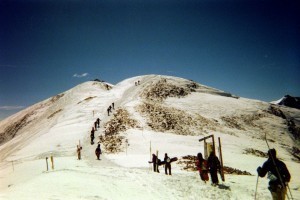 Ever since I was a little girl, I held this dream that I would move to Aspen, Colorado. It was in my twelfth year on my first trip out there, that I had found a sense of discovery in the mountains, I was given a taste of the high life. And from that day on, I always carried a feeling that some day I would live that dream. The great outdoors were calling my soul.
Ever since I was a little girl, I held this dream that I would move to Aspen, Colorado. It was in my twelfth year on my first trip out there, that I had found a sense of discovery in the mountains, I was given a taste of the high life. And from that day on, I always carried a feeling that some day I would live that dream. The great outdoors were calling my soul.
Fast forward a decade later and there I was, saying my last good byes to my home. The day had arrived, where I would pack my bags of everything I owned and drive cross country in my best friends little black truck, aimlessly optimistic of my untold future. 5,000 miles, a slight detour to Vancouver, B.C. and twenty two days later, and finally, I was en route to my final destination.
The fresh mountain air filled my lungs, my eyes frozen on the snow covered surroundings. I had made it, after years and years of imagination and wonder, I was living my dream. I had yet to uncover this vast and beautiful place, but the days to come would tell my tale.
One night I made a trip to the local market and there in the check-out line, I met one of my fates. The cover shot of the Aspen Sojourner magazine captivated me. I was flabbergasted, astounded, my eyes began to water with excitement. Blinking in utter shock, I flipped through the pages until I found the article which would introduce me to Aspen Highlands Bowl. From that moment on, I had made up my mind… I was going to hike and ride that bowl in my first winter season. I had too.
Months had past, but I never forgot the first goal I made for myself, ‘hike the bowl’. I had never laid my eyes on the Highlands bowl, but I had heard stories of how amazing it was and how good the snow was up there. So, one day I made it a point to go snowboard at Highlands to scope the mountain out for myself. I found my way to the highest rising chair lift, and with a few steps toward the ski patrol station, there I was standing face to face with the Bowl. For a second there, I could hardly breathe. A sense of intimidation set in, my stomach had butterflies, and my thoughts told me that maybe I wouldn’t be riding in the Bowl this season. Of course from where I was standing, I was still an hour hike from the the bowl, but the power of the mountain peak really took me back.
Whether I thought I was ready or not, the day came when the question was popped, “Do you want to ride the bowl tomorrow?” I responded in a timid, “Well, I don’t uh, think so, I’m not ready for that.” Needless to say, my boyfriend didn’t take no for an answer. I was going, he knew it as well as I. The following morning I awoke with a jittery feeling, I was excited, nervous, curious and stoked. We steadily made our way to the mountain with the early sun warming my nerves. The sky was open and welcoming. Today was the day I would face a challenge with mother nature. We took the chair lift up Aspen Highlands and unstrapped our boards to begin our ascent up to the top. The hike began with eager steps and a skipping heart. The snow was beaming white and the energy of fellow hikers was encouraging. Careful of each and every step, I climbed rigorously along the narrow ridge, cautious not to fall too far to the right or left. The closer I came, the wider my smile drew across my cheeks. Forty five minutes of stamina and a willful heart carried me to a place I could’ve never dreamed of. Standing at elevation 12,392 feet, I was on top of the world. With a 360 degree view of what seemed to be an endless sea of mountain ranges, I was staring my goal in the face. The serene beauty and stillness of the Rocky Mountains filled me with awe. Now for the hard part, getting down.
About the Author: My name is Stephanie Villavicencio and I’m 23 years old. I love writing because it’s a great outlet for me to share my experiences and in turn to hopefully inspire people! I believe that following my passions is the best way to live and I live to invoke those feelings in others.
The post Aspen, Colorado: Dreams Do Come True appeared first on We Said Go Travel.
How not to fall in love with Rio de Janeiro
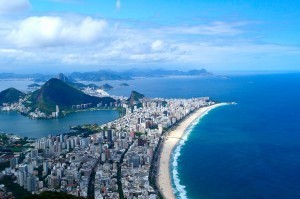 Close your eyes. Don’t you dare look at the beaches, let alone the beautiful bodies that flood them. Don’t look at the smiles, at the pearly white teeth, at the beautiful bronzed bodies. Don’t look at the sun, period. At any time of the day, but particularly in the afternoon as it turns then sky into a fiery scape of reds and orange. Don’t see the beauty in simplicity, and certainly don’t watch as children with nothing but a long string and a piece of plastic, battle with each other in the sky on the rooftops of their village. Don’t appreciate the originality of childhood- it will all just be a bit too much. Don’t admire the smile after smile after smile as you walk down a busy street. Don’t reply when someone asks you a question, and don’t replicate the passion that they show with every single word. Don’t buy a beer, but if you do be sure to drink it all to yourself, because sharing might create a level of happiness which will surely create a longing for Rio de Janeiro.
Close your eyes. Don’t you dare look at the beaches, let alone the beautiful bodies that flood them. Don’t look at the smiles, at the pearly white teeth, at the beautiful bronzed bodies. Don’t look at the sun, period. At any time of the day, but particularly in the afternoon as it turns then sky into a fiery scape of reds and orange. Don’t see the beauty in simplicity, and certainly don’t watch as children with nothing but a long string and a piece of plastic, battle with each other in the sky on the rooftops of their village. Don’t appreciate the originality of childhood- it will all just be a bit too much. Don’t admire the smile after smile after smile as you walk down a busy street. Don’t reply when someone asks you a question, and don’t replicate the passion that they show with every single word. Don’t buy a beer, but if you do be sure to drink it all to yourself, because sharing might create a level of happiness which will surely create a longing for Rio de Janeiro.
Block your ears. Don’t listen to the sound of the waves crashing against the shore, and don’t hear the laughter of everyone, everyday, enjoying their lives in the sun. Don’t hear the shouts and cheers as locals play volleyball on the beach, and by no means invite yourself in to play. Don’t enjoy slack line, futebol, bike riding or dancing forro and samba in the streets. Honestly, you won’t be welcome. Ignore the whistles and the kisses thrown from pursed lips. Don’t even turn to look because he’ll probably rape you, right?
Pinch your nose. Don’t let yourself smell the wafting scents of the kiosks on the beach, you will want to eat everything they have to offer. Don’t let the sweet aroma of sugar and bread overwhelm you, it’s a trick. So are the bolinhas. Frango, Carne and Bachalau. They are not the best, really, you won’t like them. Don’t walk to close to any other human being, for their smell of coconut mixed with endorphins will intoxicate you. And anyway, if you walk too close, they may invite you to hike a mountain or go surfing or something- something I wouldn’t recommend for someone without an open mind.
Never consider swimming in the beach; you will hate the warmth and the serenity. Don’t even walk on the sand, for the temptation will be too strong to get into the crystal blue ocean. Don’t let an inch of your skin be exposed, you may get addicted to the warmth, and if you do, don’t look in the mirror at the horrible glistening bronze colour of your newly transformed skin. Don’t go anywhere alone because you will be approached by strangers, willing and able to help you if you get lost, or willing and able to allow you to laugh. In fact don’t laugh; because you might just make new friends, friends that will be with you forever- how annoying that will be. Continue believing that everyone is dangerous and that everyone will murder or rape you. Isn’t that what everyone says will happen?
Close your mouth. Don’t put the colourful tropical fruits in your mouth, the strawberries, the mangoes, the passion fruit, the papaya, no matter how beautiful they appear. If someone invites you to go to a barbeque, don’t go for the meat, the beers, the people; will just be too much for you. If you see a capiriniha, close your eyes. That delicious mixture or cachaça, sugar and lime- no one needs that kind of temptation. Don’t try açai -just don’t- it’s a refined taste and you probably won’t like it anyway. In fact, give it to me and I’ll get rid of it for you. Don’t eat the fish, don’t eat the national dishes, and whatever you do don’t eat food off the streets, you’ll get food poisoning after all… isn’t that what they say in the guide books? And definitely, please, do not indulge in the sweet taste of a Brazilian mans lips; because he will take care of you, feed you, fuss over you, and make you feel like the only person in the world.
Handcuff your hands, or better yet, wear a straight-jacket, a helmet, a beanie, ear muffs, blacked out goggles. Suffocate yourself in order to avoid these treacherous experiences. Even if you open just one of your senses, or have just one of these experiences, you already run the risk of falling in love. My advice to you is this: Don’t board that plane, that bus. Don’t get in that car. Because this is the only possible way you will not be able to fall in love with Rio de Janeiro.
About the Author: Sherrydayne Edwards: is obsessed with travel, she loves immersing herself in different cultures. She travels around the world on her own in a never-ending whirlpool of adventures. These are the real life stories of a girl travelling the world, in search of anything and everything. She is living proof that dreams don’t have to be dreams and bucket lists are not for the dead.
The post How not to fall in love with Rio de Janeiro appeared first on We Said Go Travel.
Australia: Lady Elliot Island
I knew there was a shark there, but I lost sight of him. I must have just snorkeled over his four foot body laying camouflaged on the sea bed floor. I turned to have one last look and then couldn’t find the shark which I knew had to be there. Chris and I signaled to each and slowly swam back towards the spot we last saw him laying. We floated in the water above the undetectable wobbegong shark until an under current moved his back fin ever so slightly. Chris and both pointed under water at the same time and gave each other the ‘ok’ sign. We had re-found the wobbegong shark.

Wobbegong Shark
The wobbegong camouflages so well they are virtually undetectable when laying still.
One of the benefits of being both a country and a continent is being surrounded by water and Australia’s waters are home to an amazing diversity of aquatic wildlife. One such place that stands out as a once in a life time, or as many times as you can possibly go, is Lady Elliot Island.
At the southern end of the Great Barrier Reef, Lady Elliot sits 53 miles/ 85 kms off shore. With the highest level of conservation status designated by the Great Barrier Marine Park Authority, the island is a green zone with no collecting species, harassing animals or fishing or any kind. Animals have been living and pausing for rest along their migration routes for years relying on it’s water for protection.
Accessible only by small passenger plane and far enough away from shore to not be as affected by direct runoff, Lady Elliot Island (LEI) is a wildlife bubble waiting to absorb the keen observer. Below is a school trevally that we swam around as they rested by the island for a few days.
We spent five nights and six days with wide eyes peering through our snorkel mask at all the different marine species we saw. We splashed out some cash and took advantage of a deal to stay six nights for the price of five including breakfast, dinner and two dives a day. Five years ago we wouldn’t have been in the position to afford the chance to go to this island. As a traveler there are endless things for one to spend their money on. We could easily spend $1000 a day if the sky was endless. Most of the time we make significant sacrifices to stretch our dollars to be able to have an opportunity like LEI. There are certain excursions, places to visit and things to do that require a traveler to drop some money. We try to pick and choose wisely which excursions if we went home without the experience we would regret the missed opportunity.
We were so happy with our decision to go to LEI as we observed dozens of green sea turtles swimming all around the island. What Lady Elliot offers is a chance to see a huge amount of diverse wildlife in a small spot. We were so busy diving and snorkeling that even tho the island is only 110 acres, it took us four days to even walk around the entire island because we were spending so much time in the water.
If you are a new diver, fill up your dive book at LEI, this is a great place to get comfortable under the water. A dive package was included with our booking and it is a perfect spot for new divers to gain confidence. The visibility is amazing, (often 20+ meters), many of the dives are shallow (around a comfortable 16 meters) and we got to swim with manta rays and hear humpback whales singing.
If your scheduling allows, call to dive shop and ask what their dive calendar bookings are like. By doing so we were able to book our stay right in between when two universities were going to be on the island. Our dive groups were small and the guides were extremely knowledgeable, passionate and safety conscious.
Loading up all the gear for the dive.
This was a small white tip reef shark swimming under us but don’t miss the turtle in the upper right corner of this picture.
Bottom line is LEI was one of the best things we ever did for viewing marine life. It was worth the splurge. Although we went there for the diving, the food and staff were also amazing. We were on a first name basis with most the people on the island by the time we left.
With a pointier beak and more edgy shell than the green turtle, above a hawks bill turtle swam by.
If you ever have the chance in your life, get yourself to one of the natural wonders of the world, the Great Barrier Reef and spend some time there. We snorkeled several times with the manta above, but where she goes when she leaves LEI is a mystery. There is so much research and study to be done to understand what type of life these animals live. By choosing to support eco-certified businesses we help conserve wildlife habit. Our time to explore this planet is small, yet our impact can be huge. As travelers, globally where we spend our dollars speaks the loudest. When I am making purchases any where on this planet, I think back to experiences I had like swimming with the manta rays and try to support the least impactful companies that I can. Swimming with the mantas was one of the most memorable experiences of my life.
And just as I had the opportunity, I hope you can too.
The post Australia: Lady Elliot Island appeared first on We Said Go Travel.
We Said Go Travel
We Said Go Travel is a global community of over sixteen hundred writers with articles from every continent.
Stories are shared with photos and video from a perspective of the transformative power of travel. We Said Go Travel has hosted live and online events as well as travel writing contests around the world. ...more
- Lisa Niver's profile
- 57 followers














